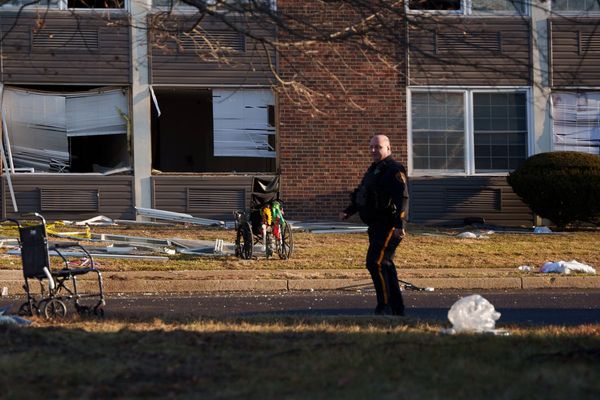Prime Minister Narendra Modi on Sunday inaugurated India’s new Parliament building, and called it a symbol of the “aspirations” of 140 crore citizens and a vehicle that will drive India in the next 25 years towards its goal of becoming a “developed country” to coincide with the 100th anniversary of the nation’s Independence.
The thrust of the Prime Minister’s 35-minute address was about casting a “new India” that has left behind a “slave mentality” and was moving forward. The word “new” figured more than 40 times in his speech.
“It is not only a building. It is a reflection of the aspirations and dreams of 140 crore Indians. This is the temple of our democracy giving the message of India’s determination to the world,” he said.
Mr. Modi said there came a time in the history of every country when consciousness was awakened anew; the last such phase was 25 years before India gained Independence. “In 25 years, India will complete 100 years of its Independence. Together, we have to make India a developed nation in these 25 years. In the next 25 years, the new laws to be made in this new building of Parliament will make India a developed India,” he said.
The new Parliament House will be a witness to the sunrise of an “atmanirbhar bharat” (self-reliant India), he said, adding that the new building was an example of the coexistence of the ancient and the modern.
Also read | New Parliament inauguration LIVE | The building reflects aspirations of new India: PM Modi
Elaborate ceremony
The inaugural ceremony was conducted in two phases. In the morning, Mr. Modi — dressed in a dhoti and kurta and accompanied by Lok Sabha Speaker Om Birla — offered floral tributes to the Mahatma Gandhi statue on the premises. Then, amid Vedic chants by priests, he performed Ganapati homam. After prostrating before the Sengol, he sought blessings from the high priests of various adheenams in Tamil Nadu with the sceptre in hand. He then carried the Sengol in a procession to the new Parliament building, amid tunes of nadaswaram and chanting of Vedic mantras, and installed it in a special enclosure on the right side of the Speaker’s chair in the Lok Sabha chamber.
Also read: Sengol | A symbol of virtue
A multi-faith prayer was also held to mark the occasion. The Prime Minister felicitated some of the workers with shawls and souvenirs for their key role in the construction of the building.
The second part of the ceremony began at noon when Mr. Modi, along with Mr. Birla and Rajya Sabha Deputy Chairman Harivansh, entered the new building. He was greeted with a standing ovation from the audience in the Lok Sabha and the hall reverberated with slogans of “Modi, Modi”, “Bharat Mata ki Jai” and “Harr, Harr Mahadev”. An occasional “Shivaji Maharaj ki jai” also was heard. The sloganeering went on till the three reached the dais and the ceremony began formally.
Opposition boycott
MPs from 22 Opposition parties were absent. Former President Ram Nath Kovind, Supreme Court judges, Chief Ministers Y.S. Jagan Reddy, Yogi Adityanath, Eknath Shinde and Neiphu Rio and other distinguished guests attended the event.
Mr. Modi recited a Sanskrit shloka to underline that luck runs out for those who stop moving forward but the fate of those who keep moving continues to soar, in an oblique reference to the Opposition leaders who were criticising the construction of the new Parliament. He said the ultramodern complex was the “need of the hour” in view of the expected increase in the number of MPs.
Under attack from the Opposition for bringing into Parliament the “monarchical” Sengol and for his alleged autocratic ways, the Prime Minister spent a significant amount of time talking about “democracy”. “Democracy is not just a system for us, it is a culture, an idea, a tradition.” The Sengol, he said, was considered a symbol of the “kartavya path” (path of duty), “seva path” (path of service) and “rashtra path” (path of the nation).
He also gave an account of the nine years of his government that he referred to as “navnirman” (regeneration), saying four crore houses and 11 crore toilets were constructed, 4 lakh kilometres of village roads laid, 50,000 water reservoirs built and more than 30,000 panchayat bhavans set up during this period.
Special messages
While President Droupadi Murmu and Vice-President Jagdeep Dhankhar were not invited to the event, messages from them were read out during the ceremony. Ms. Murmu, whose absence triggered a controversy and led to the boycott by Opposition parties, endorsed the decision to have the Prime Minister inaugurate the building. “The architects of our Constitution imagined a nation whose form was constructed on the edifice of legislative discretion of the Parliament made up of democratically elected representatives. Therefore, I am deeply happy that the symbol of Parliament’s trust, Prime Minister is inaugurating the building,” she declared in her message, read out by Mr. Harivansh.
Mr. Dhankhar, who also spoke in favour of Mr. Modi inaugurating the building, echoed similar sentiments in his message. “I am happy that PM Modi who is the first PM of India who took birth after India’s Independence is launching the new Parliament. As I always say that Lok Sabha is the north star of democracy. It is the most authentic constitutional forum reflecting the mandate of people. Its decisive role in law making and shaping the destiny of Bharat is inviolable and it is the basic mantra, nectar and essence of democracy,” his message read.
Mr. Birla noted that the Parliament building was constructed in a record time of two-and-a-half years. He also applauded the building’s architecture, which he said showcased the excellent and diverse cultural heritage of the whole of India. “In this building, every Indian will get a glimpse of the culture of his State,” he said.
Mr. Modi also unveiled a commemorative postage stamp and coin on the occasion.







